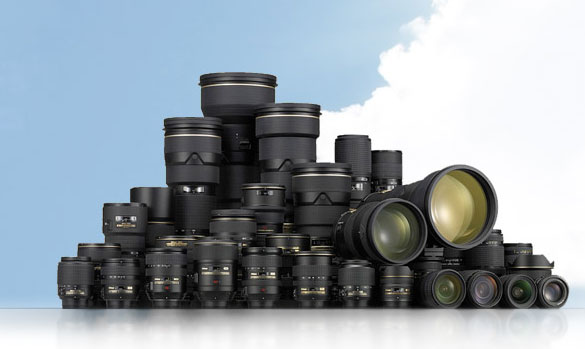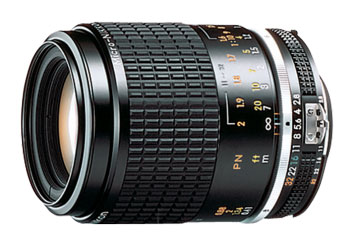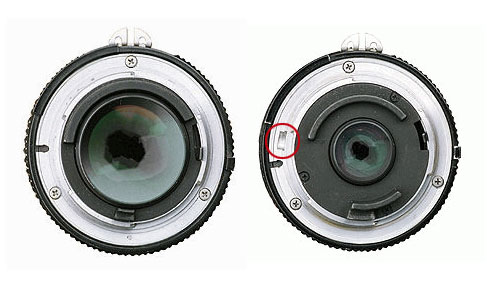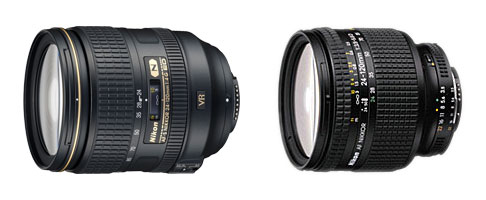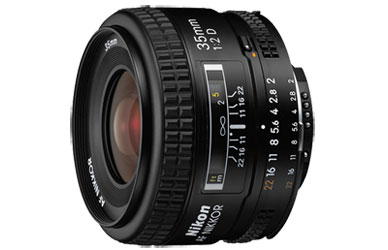Which NIKKOR Lens Type is Right for Your DSLR?
Revised September 2016
Reading about all of the different lens types and abbreviations might be a bit overwhelming, so we'll try to simplify this as much as possible. You're interested in one of the latest NIKKOR lenses, but aren't sure if it will work with your camera. Well, there's an easy way to know—by checking the abbreviations that make up the name of each NIKKOR lens.
Nikon makes two different types of DSLR camera bodies—those that have a built-in focus motor, and those that don't. The cameras that don't have a focus motor built-in need to use a lens that has a focus motor built-in to it. There are two types of Nikon lenses that have a built-in focus motor: AF-S lenses and AF-P lenses. Lenses that do not have a focus motor incorporated into it are simply called AF NIKKOR lenses.
AF NIKKOR lenses use a mechanical coupling between the lens and the camera body. On several Nikon DSLR camera bodies, the focus motor is in the camera and a series of gears drives the lens' focusing mechanism, which allows the lens to focus.
AF-S NIKKOR lenses feature Nikon’s Silent Wave Motor (SWM). This technology converts “traveling waves” into rotational energy to focus the optics. This enables high-speed autofocusing that's extremely accurate and super quiet.
AF-P lenses use a “Pulse” motor or “Stepping” autofocus motor and are even quieter and smoother to autofocus than an AF-S lens, making these lenses ideal when shooting video with a DSLR.
The DSLR camera bodies that do feature a focus motor can utilize AF and AF-S lenses. Or, in other words, because AF-S NIKKORs have the focus motor built into the lens, they can be used on any current Nikon camera body, whether the body has a focus motor or not, because the lens itself controls the focusing function.
Consumer level Nikon digital SLR cameras are designed without built-in focus motors, which allow them to be smaller and lighter than the larger, more professional models. Consumer DSLRs that do not incorporate a built-in focus motor, therefore need to use an AF-S or AF-P NIKKOR lens to get the full autofocus capabilities from the lens.
But what if you own one of the aforementioned consumer level camera bodies and really want to use an AF lens. You need to know if your camera can accept the lens—and the answer is yes. An AF NIKKOR lens can be used on a consumer camera, with limited functionality. You will have to manually focus the lens, using the focus ring on the lens barrel. The electronic rangefinder, which is visible in the lower left portion of the viewfinder, will confirm that your subject is in focus. Rotate the focus ring on the lens and when it lights up green, the subject is in focus.
AF-P Lenses
The newer AF-P lenses let you set certain settings from the camera’s menu system, such as VR (Vibration Reduction) and the AF/MF mode. Older lenses have switches on the lens barrel for turning VR on and off, as well as switching between manual focus mode and AF mode.
Because the focus mode and VR are set using the camera menus, not every Nikon DSLR is compatible with AF-P lenses, and those that are may need to have their firmware updated so they’ll show the correct menu items.
E-Type NIKKOR Lenses
Select newer NIKKOR lenses incorporate an electromagnetic diaphragm mechanism in the lens barrel to provide highly accurate electronic diaphragm or aperture blade control when using auto exposure during continuous shooting, especially when shooting at high frame rates. This is different from G or D type lenses, in which the diaphragm blades are operated mechanically. Older digital SLR camera bodies as well as film SLRs can not use E type lenses.
Legacy NIKKOR Lenses
One of the great aspects of Nikon's camera systems is that most of the legacy lenses—those that you may have used with your film-based Nikon SLR camera—can be used on your digital SLR camera. There may be some limitations, depending upon exactly which NIKKOR lens you're looking to use with your DSLR, but we'll get into that in a minute.
An AIs lens, the Micro NIKKOR 105mm f/2.8 lens is a manual focus lens.
AI Lenses
What if you've got older lenses that you used to use with a Nikon film-based SLR camera—well you can use those lenses as long as they were made after 1977. That's when Nikon began manufacturing AI lenses. AI stands for "Automatic Maximum Aperture Indexing" system, which is the mechanical system for coupling the lens to the camera's exposure system.
AI lenses are manual focus, and can be used on any Nikon DSLR with a few exceptions. In general, the higher-end camera bodies will be able to meter through the lens of an AI NIKKOR. The prosumer and consumer level bodies can accept an AI NIKKOR lens, but the exposure will need to be determined manually, using a light meter, not through the lens.
The AIS lens, which came later, allowed for automatic aperture control; which controlled the aperture more precisely.
An AI-P lens is a manual lens that has a CPU (basically a computer) built into it; which is used to transfer metering data from the lens to the camera.
An AF-I lens uses a built-in D/C coreless focus drive motor for speedy autofocus operation and were Nikon's first lenses to offer the now popular M/A focusing mode.
So regardless of the other abbreviations you may see on NIKKOR lenses, certain consumer Nikon DSLR cameras require the use of AF-S lenses for full functionality. The higher-end pro DSLR camera bodies need only an AF lens for autofocus functionality. An AI lens can be used, when focusing manually, on almost all Nikon DSLR cameras, but can only meter through the lens when paired with the higher end DSLR models.
Nikon Ai NIKKOR lens. (r.) A Nikon Ais NIKKOR lens, with lens type signaling pin notch, highlighted in red.
Differences between Autofocus and Manual Focus Lenses
Now that we've gone through a little history of NIKKOR lenses, we'll discuss the differences between autofocus and manual focus NIKKOR lenses.
Nikon currently offers lenses that have autofocus operation and others that offer only manual focus operation. Because you sometimes want to be able to control the focus yourself you can actually manually focus any autofocus NIKKOR lens, simply by setting it to the manual focus mode.
We know there are three series of autofocus lenses: AF NIKKOR, AF-S NIKKOR and AF-P NIKKOR. They can all be used in manual focusing mode.
The AF-S version of the Nikon 24-120mm lens; (r.) the AF version of the Nikon 24-120mm lens.
D-Type NIKKOR Lenses
A D-type lens relays subject-to-camera-distance information to Nikon DSLRs that feature 3D Color Matrix Metering (all versions), 3D Matrix Metering, 3D Multi-Sensor Balanced Fill-Flash and i-TTL Balanced Fill-Flash. Many D-Type lenses have an aperture control ring and can be used on older Nikon SLR cameras that allow for manual control of the aperture, as well as on DSLRs—especially useful for adjusting aperture while recording D-Movies on higher end models. When used on a DSLR, the aperture control ring needs to be locked at the smallest possible aperture (generally designated in orange), and the aperture control is maintained through the camera's command dial.
The AF NIKKOR 35mm f/2D lens is an example of a D-Type lens.
G-Type NIKKOR Lenses
A G-type lens does not have an aperture control ring and are intended for use on Nikon DSLRs that allow the lens aperture to be adjusted via the camera's command dial. Because G-type lenses relay subject-to-camera-distance information to the camera, where it is used to help determine ambient and flash exposure, they are also considered to be D-type lenses. The lack of an aperture control ring is perhaps the easiest way that you can tell if a lens is a G-Type NIKKOR or not. [The AF-S NIKKOR 24-120mm f/4G ED VR lens, shown above is an example of a G-Type lens. Note there is no aperture ring on that version of the lens, while there is an aperture ring on the AF version, above right.]
Manual Focus NIKKOR Lenses
Manual focus NIKKOR lenses, on the other hand, don't have the capability to autofocus at all. Manual focus lenses can be used on all current Nikon DSLRs, in the manual focus mode.
With the inclusion of HD video capture in many new Nikon DSLRs, manual prime (or fixed focal length) lenses are experiencing a resurgence in popularity. Manual focus lenses will not use the in-camera metering systems on several DSLRs so make sure to review your instruction manual to understand the compatibility of manual focus NIKKOR lenses and your particular camera. [The Micro NIKKOR 105mm f/2.8 lens, which is shown as an example of an Ais lens, is a manual focus lens.]

